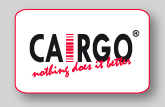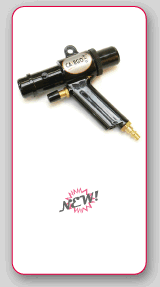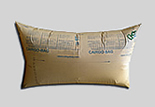Glossary - B
B/L
Back Haul
Back Letter
Back Order
Backlog
B.A.F.
Balespace
Ballast
Banking System
Bar Coding
Bare Boat Charter
Barge
Bars
Base
Basic Stock
Batch
Battens
Bay
Bay Plan
Behälter Tragwagen
Belly
Berth
Bilateral Transport Agreement
Bill of Health
Bill of Lading
Billing Participant
Bimodal Trailer
Block Train
Boatman
Body Bolster
Bollard
Bolster
Bona Fide
Bonded
Booking
Booking Reference Number
Bordereau
Bottleneck
Bottom End Transverse Member
Bottom Fittings
Bottom Lift
Bottom Side Rail
Box Pallet
Branch Warehouse
Break Bulk
Break Bulk Cargo
Break-even Weight
Broken Stowage
Brussels Tariff Nomenclature
BSI Specification
B.T.N.
B.T. Wagon
Buffer Stock
Bulge
Bulge Packing
Bulk Cargo
Bulk Carrier
Bulk Container
Bulk Freight
Bulk Handling
Bulk Head
Bulk Unitization Charge
Bulkhead
Bull Rings
Bundle
Bung Chisel
Bunker
Bunker Adjustment Factor
Bunkers
Bureau Veritas
Burlap
Bursting Strength
Business Logistics
Buyers Market
B/L
See Bill of Lading.
Back Haul
The return movement of a means of transport which has provided a transport in one direction.
Back Letter
Back letters are drawn up in addition to a contract in order to lay down rights and/or obligations between both contraction parties, which, for some reason cannot be included in the original contract. This expression is sometimes used for letters of indemnity which are drawn up if the condition of the goods loaded gives rise to remarks and, nevertheless, the shipper insist upon receiving clean Bill of Ladings. Letters of indemnity are only allowed in very exceptional circumstances.
Back Order
A customer order or commitment, which is unfilled due to insufficient stock.
Backlog
The total number of customer orders which have been received but not yet been shipped.
Synonym: Open Order.
B.A.F.
Balespace
The balespace of a vessel is the capacity of cargo spaces under deck (including hatchways but excluding void spaces behind cargo battens and beams) expressed in cubic metres or cubic feet.
Ballast
Materials, solely carried to improve the trim and the stability of the vessel. In Nedlloyd vessels usually water is carried as ballast in tanks, specially designed for that purpose.
Banking System
The practice of always keeping more than one piece of cargo on the quay or in the vessel ready for loading or discharging in order to avoid delays and to obtain optimal use of the loading gear.
Bar Coding
A method of encoding data for fast and accurate readability. Bar codes are a series of alternating bars and spaces printed or stamped on products, labels, or other media, representing encoded information which can be read by electronic readers, used to facilitate timely and accurate inmput of data to a computer system. Bar codes represent letters and/or numbers.
Bare Boat Charter
A demise charter whereby the charterer has the right to place his own master and crew on board of the vessel.
Barge
Flat bottomed inland cargo vessel for canals and rivers with or without own propulsion for the purpose of transporting goods.
Synonym: Lighter.
Bars
Special devices mounted on container doors to provide a watertight locking.
Synonym: Door locking bars.
Base
Home depot of container or trailer.
Basic Stock
Items of an inventory intended for issue against demand during the resupply lead time.
Batch
A collection of products or data which is treated as one entity with respect to certain operations e.g. processing and production.
Battens
Members protruding from the inside walls of a vessel's hold or a (thermal) container to keep away the cargo from the walls to provide an air passage. They may be integral with the walls, fastened to the walls or added during cargo handling.
Bay
A vertical division of a vessel grom stem to stern, used as a part of the indication of a stowage place for containers. The numbers run from stem to stern; odd numbers indicat a 20 foot position, even numbers indicate a 40 foot position.
Bay Plan
A plan which shows the locations of all the containers on a vessel.
Behälter-Tragwagen
Abbreviation: B.T. Wagen.
A container wagon of the German Railways.
Belly
A term applied to the underfloor area of an aircraft.
Berth
A location in a port where a vessel can be morred, often indicated by a code or name.
Bilateral Transport Agreement
Agreement between two nations concerning their transport relations.
Bill of Health
The Bill of Health is the certificate issued by local medical authorities indicating the general health conditions in the port of departure or in the ports of call. The bill of health must have been vised before departure by the Consul of the country of destination. When a vessel has free pratique, this means that the vessel has a clean Bill of Health certigying that there is no question of contagious disease and that all quarantine regulations have been complied with, so that people may embark and disembard.
Bill of Lading
Abbreviation: B/L.
A document which evidences a contract of carriage by sea and the taking over or loading of the goods by the carrier, and by which the carrier undertakes to deliver the goods against surrender of the document. A provision in the document that the goods are to be delivered to the order of a named person, or to order, or to bearer, constitutes such an undertaking. The document has the following functions:
1) A receipt for goods, signed by a duly authorized person on behalf of the carriers.
2) A document of title to the goods described therein.
3) Evidence of the terms and conditions of carriage agreed upon between the two parties.
At the moment 3 different models are used: B/L R 302 A modern document for either combined transport or port to port shipments depending whether the relevant spared for place of receipt and/or place of delivery are indicated on the face of the document. Synonym Combined Transport Bill of Lading. B/L 300 A classic Bill of Lading which can also be used in case of pre- and oncarriage.
Sea Way Bill - A non-negotiable document, which can only be made out to a named consignee. No surrender of the document by the consignee is required.
Service Bill - A Service Bill (of Lading) is a contract of carriage issured by one carrier to another for documentary and internal control purposes. E.g. in case Nedlloyd cargo is carries on a non Nedlloyd vessel.
Memo Bill - For internal documentary and control purposes a so-called participating agent in a consortium uses some kind of document which, depending on the trade, is referred to as "Memo Bill" which will among others state: - Name of carrier on whose behalf the original document (Way Bill, Bill of Lading, etc) was issued. - The original document number. - The agent who issued the original document and his opponent at the discharging side. - The number of packages, wight and measurement, marks and numbers of goods description. - Further mandatory details in case of special cargo. No freight details will be mentioned and the Memo Bill is not a contract of carriage.
Billing Participant
A party who is neither a C.A.S.S. airline nor a part participant and who submits, in an electronically readable form, to the Settlement Office Air Waybill data of transactions made on its behalf by agents (aircargo).
Bimodal Trailer
A trailer which is able to carry different types of standardised unit loads, e.g. a chassis which is appropriate for the carriage of on FEU of two TEU's.
Block Train
A number of railway wagons loaded with containers, departing from a certain place and running straight to a place of destination, whichout any coupling or decoupling or wagons.
Boatman
Person who attents th the mooring and unmooring of vessels.
Body Bolster
The transverse members of the underframe over the trucks which transmit the load carried by the longitudinal sills to the truchs through the center plate.
Bollard
Post, fixed to a quay or a vessel, for securing mooring ropes.
Bolster
See Container Bolster.
Bona Fide
In good faith; without dishonesty, fraud or deceit.
Bonded
This means that certain goods are stored under charge of customs viz. customs seal until the import duties are paid or until the goods are taken out of the coutnry.
1) Bonded warehouse (place where goods can be placed under bond).
2) Bonded store (place on a vessel where goods are placed behind seal until the time that the vessel leaves the port or country again).
3) Bonded goods (dutiable goods upon which duties have not been paid i.e. goods in transit or warehoused pending customs clearance).
Booking
1)The offering by a shipper of cargo for transport and the acceptance of the offering by the carrier or his agent
2) For aircargo: synonym: Reservation.
Booking Reference Number
The number assigned to a certain booking by the carrier or his agent.
Bordereau
Document used in road transport, listing the cargo carried on a road vehicle, often referring to appended copies of the road consignment note.
Bottleneck
A facility, function, department etc. that impedes performance, for example a warehouse or distribution centre where goods arrive at a faster rate than they can be transported or stored, thus causing stock-piling at improper moments or in unwanted areas.
Bottom End Transverse Member
Tansverse structural member at the bottom of an "end frame" of a container joining the bottom corner fittings of the end in question. Where mounted below end doors, these members are commonly known as "door sills".
Bottom fittings
Special conical shaped devices inserted between a container and the permanent floor on the deck of a vessel in order to avoid shifting of the container during the voyage of this vessel.
Bottom lift
Handling of containers with equipment attached to the four bottom corner fittings (castings).
Bottom Side Rail
Longitudinal structural member at the bottom of a side of a container joining the bottom corner fittings or the side in question.
Box Pallet
Pallet with at least three fixed, removable or collapsible, vertical sides.
Branch Warehouse
See Distribution Centre.
Break Bulk
1) To commerce discharge.
2) To strip unitized cargo (aircargo).
Break Bulk Cargo
General cargo conventioanlly stowed as opposed to unitized, containerized and Roll-on Roll-off cargo.
Synonym: Conventional Cargo.
Break-even Weight
The weight at which it is cheaper to charge the lower rate for the next higher weightbreak multiplied by the minimum weight indicated, than to charge the higher rate for the actual weight of the shipment (aircargo).
Broken Stowage
The cargo space which is unavoidably lost when stowing cargo. The percentage of wasted space depends upon e.g. the kind of cargo, the packing and the used spaces.
Brussels Tariff Nomenclature
Abbreviation: B.T.N.
The old Customs Cooperation Council Nomenclature for the classification of goods. Now replaced by the Harmonised System.
BSI Specification
British Standards Institution Specification for freight containers.
B.T.N.
See Brussels Tariff Nomenclature.
B.T.Wagon
See Behälter Tragwagen.
Buffer Stock
A quantity of goods or articles kept in store to safeguard against unforeseen shortages or demands.
Bulge
See
A) Compression Bulge
B) Filling Bulge
C) Settling Bulge
Bulge Packing
A method of packaging perishable produce in which a wooden box or crate is overfilled and the cover is put in place by pressure on its ends, leaving a considerable bulge at the center.
Bulk Cargo
Unpacked homogeneous cargo poured loose in a certain space of a vessel, e.g. oil or grain.
Bulk Carrier
Single deck vessel designed to carry homogeneous unpacked dry cargoes such as grain, iron ore and coal.
Bulk Container
Shipping container designed for the carriage of free-flowing dry cargoes, which are loaded through hatchways in the roof of the container and discharged through hatchways at one end of the container.
Bulk Freight
Freight not in packages or containers.
Bulk Handling
Avoiding the use of packages such as bags, boxes, carboys and metal drums; for moving or transporting through specialized equipment suited to the particular material. Normally material is granular, powdered or liquid.
Bulk Head
A partition in a (thermal) computer providing a plenum chanber oand/or air passage for either return or supply air. It may be an integral part of the appliance or a separate member.
Bulk Unitization Charge
Charge which applies to consignments carried from airport of departure to airport of arrival, entirely in Unit Load Devices (aircargo).
Bulkhead
1) Upright partition dividing compartments on board a vessel. The functions of bulkheads are - To increase the safety of a vessel by dividing it into watertight compartments. - To separate the engine room from the cargo holds. - To increase the transverse strength of a velssel. - To reduce the risk of spreading fire to other compartments.
2) A vertically mounted board to provide front wall protection against shifting cargo and commonly seen on platform trailers (road cargo). Synonym: Header Board.
3) A partition in a container, providing a plenum chamber and/or air passage for either return or supply air. It may be an integral part of the appliance or a separate construction.
4) A vertically mounted wall separating the fore respectively aft compartment from the rest of the aircraft (aircargo).
Bull Rings
Rings for lashing the cargo in containers.
Bundle
A package which is formed by utilizing the contents as a mandrel around which lexible packaging material is wrapped and sealed. Contents are thus unitized for handling and shipping.
Bung Chisel
A tool shaped like a chisel, used for removing bungs from wooden barrels.
Bunker
(Tank) spaces on board a vessel to store fuel.
Bunker Adjustment Factor
Abbreviation: B.A.F.
Adjustment applied by shipping lines or liner conferences to offset the effect of fluctuations in the cost of bunkers.
Bunkers
Quantity of fuel on board a vessel.
Bureau Veritas
French classification society.
Burlap
The Americal name for cloth woven from jute fibres.
Bursting Strength
The minimum breaking resistance in pounds per square inch of material. This is measured by a Cady or Mullen Tester using a diaphragm to distend the material 3/8" before rupture.
Business Logistics
The coordinating function of material management and physical distribution, which executes the integral control of the goods flow.
Buyers Market
A "buyers market" is considered to exist when goods can easily be secured and when the economic forces of business tend to cause goods to be priced at the purchaser's estimate of value. In other words, a state of trade favourable to the buyer, with relatively large supply and low prices.









